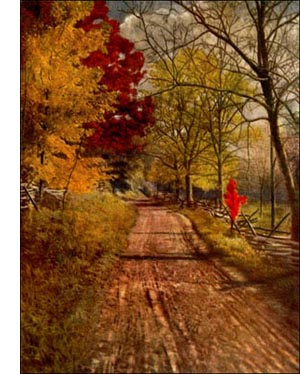Conifers
 The distinguishing feature of this great tree group is the cone-bearing habit. The overlapping scales of the cone are attached to a central stem, and each scale bears one or more naked ovules when the time of flowering comes. Pollen from the staminate flowers falls on the exposed ovules, fertilising them, and thus seed is set. The fertile scales are favourably situated near the middle of the cone. Here the best seeds are found. The terminal scales crowd at both ends of the cone, and their seeds usually fail utterly or are stunted in development.
The distinguishing feature of this great tree group is the cone-bearing habit. The overlapping scales of the cone are attached to a central stem, and each scale bears one or more naked ovules when the time of flowering comes. Pollen from the staminate flowers falls on the exposed ovules, fertilising them, and thus seed is set. The fertile scales are favourably situated near the middle of the cone. Here the best seeds are found. The terminal scales crowd at both ends of the cone, and their seeds usually fail utterly or are stunted in development.The coalescence of scales to form soft berries characterises the junipers, but the cone-like flowers indicate that the modification in fruit is more apparent than real. The scale tips are there on the outside of the berry to indicate the close kinship of these trees with other conifers.
The yews are not conifers, but are set in a family by themselves. A single ovule stands erect in the pistillate flower, and becomes in fruit a 1-seeded drupe, or soft berry. Two genera of yews, with two species of trees in each, constitute the family in the United States. The conifers include thirteen genera and a great number of species, quite overshadowing the yews in importance. Together the two families form the botanical grand division of the Gymnosperms, resinous plants (mostly trees) whose flowers have no true pistils, but bear their ovules nakedon a cone scale in the conifers-without even a scale to lean upon in the yews.
Ginkgo or Maidenhair Tree